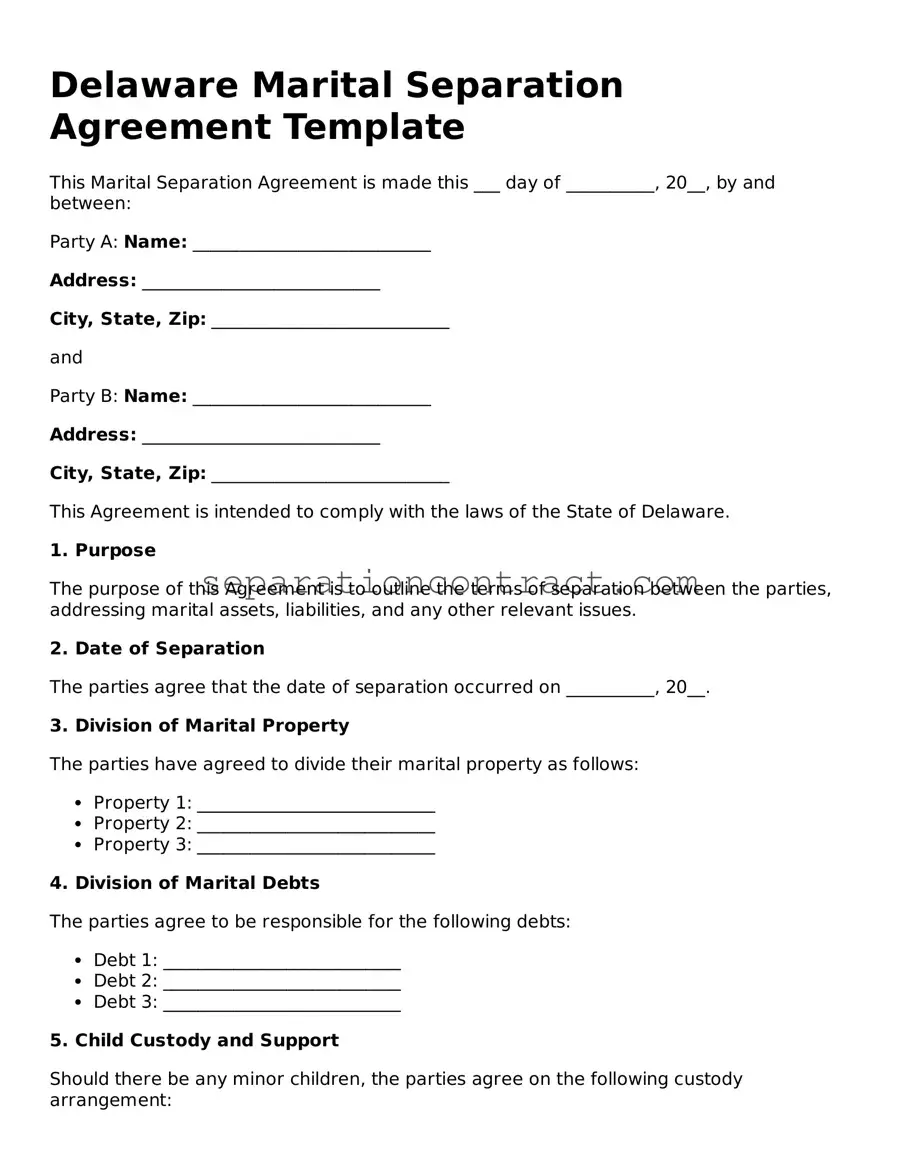Valid Marital Separation Agreement Form for the State of Delaware
A Delaware Marital Separation Agreement is a legal document that outlines the terms of a couple's separation. This form helps both parties clarify their rights and responsibilities regarding property, debts, and child custody. If you’re considering separation, filling out this form can provide a clear framework for your next steps—click the button below to get started.
Fill Out Your Form Online
